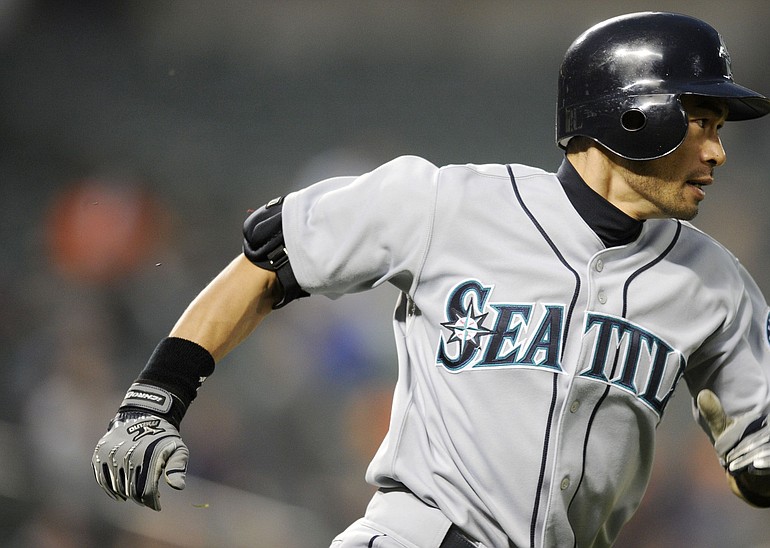According to the eyeball test, Ichiro is one of the best baserunners in the game.
He’s fast. He’s alert. When he gets a head of steam, he’s so slight and wispy that he looks like a cheetah.
And we all know the eyeball test is infallible, right? Which brings us to two questions: Is Ichiro, indeed, a good baserunner? And how important is baserunning to a team’s success?
Years ago, baseball fans had no methods for answering these questions. But in an age when everything is measurable and all measurements are readily available, fans no longer have to guess.
Empirical information always is preferable to the eyeball test, and now we have that. It comes courtesy of “The Bill James Handbook,” an annual publication of baseball statistics that in recent years has included details of each player’s baserunning prowess.
So, what about Ichiro? To cut to the chase: Yes, he’s a fine baserunner; not the best, but a good one.
Last year, he went from first to third on a single seven times in 39 opportunities. That’s 18 percent of the time, which is actually well below the major-league average of 27 percent. But in terms of going from second to home on a single, or first to home on a double, he was well above the norm.
Here are the numbers for each situation:
Ichiro MLB
First to third 7 of 39 18 pct 27 pct
First to home 13 of 20 65 pct 58 pct
First to home 7 of 11 64 pct 43 pct
But that’s not all. In 2009, Ichiro was thrown out once trying to take an extra base on a hit, and he was never doubled off. That means he made one out on the basepaths, which is far different from the eight outs he made in 2006.
In addition, he grounded into one double play in 93 opportunities (that’s 1.1 percent, while the major-league average was 10.7 percent), and he stole 26 bases in 35 attempts — solid, but not outstanding.
Add it all together, and Ichiro is credited as being +32 bases on the basepaths. That was the best mark among all right fielders, but well short of the Astros’ Michael Bourn, who led the majors at +55.
Baserunning long has been a misunderstood part of the game. Often, you’ll find players who are fast but careless and run their teams out of innings. Other times, you’ll find players who are slow but smart, effectively taking extra bases when possible.
It’s not always about speed. It’s also about smarts and the philosophy of the team and judgment of the third-base coach.
For example, Chase Utley stole 23 bases last year. That’s nowhere near the league lead, but he did so in 23 attempts. That’s good baserunning.
Add in Utley’s exceptional ability in all other facets — going from second to home on a single 13 times in 15 opportunities — and Utley was +50 on the bases.
But the question remains: How much does all this matter?
As Bill James writes: “The difference between the best baserunner in the majors (Michael Bourn) and the worst (Juan Rivera) was 95 bases, or about 24 runs. That’s nowhere near as large as the difference between Ryan Howard’s bat and Willie Bloomquist’s. … It is not that large, but it is not meaningless or insignificant, either.”
The best baserunning team in baseball last year was the Phillies, who just happened to win the National League pennant. The Phillies were +109 on the basepaths, while Kansas City was last at -67 — a difference worth about 44 runs.
On the other hand, the Yankees were the 22nd-best baserunning team. They managed to win the World Series, despite being a poor baserunning team.
So, while baserunning is important, it is demonstrably not as crucial as, say, on-base percentage. For example, Chone Figgins, now with the Mariners, was +35 on the bases last year. That’s rather meaningless when you have a .311 on-base percentage, as Figgins does this year.
Which leads us to the immutable truth about baserunning: It simply doesn’t matter until you get on base. And you don’t need to go beyond the eyeball test to figure that out.
Question or comment for By the Numbers? You can reach Greg Jayne, Sports editor of The Columbian, at 360-735-4531, or by e-mail at greg.jayne@columbian.com. To read his blog, go to columbian.com/weblogs/GregJayne



